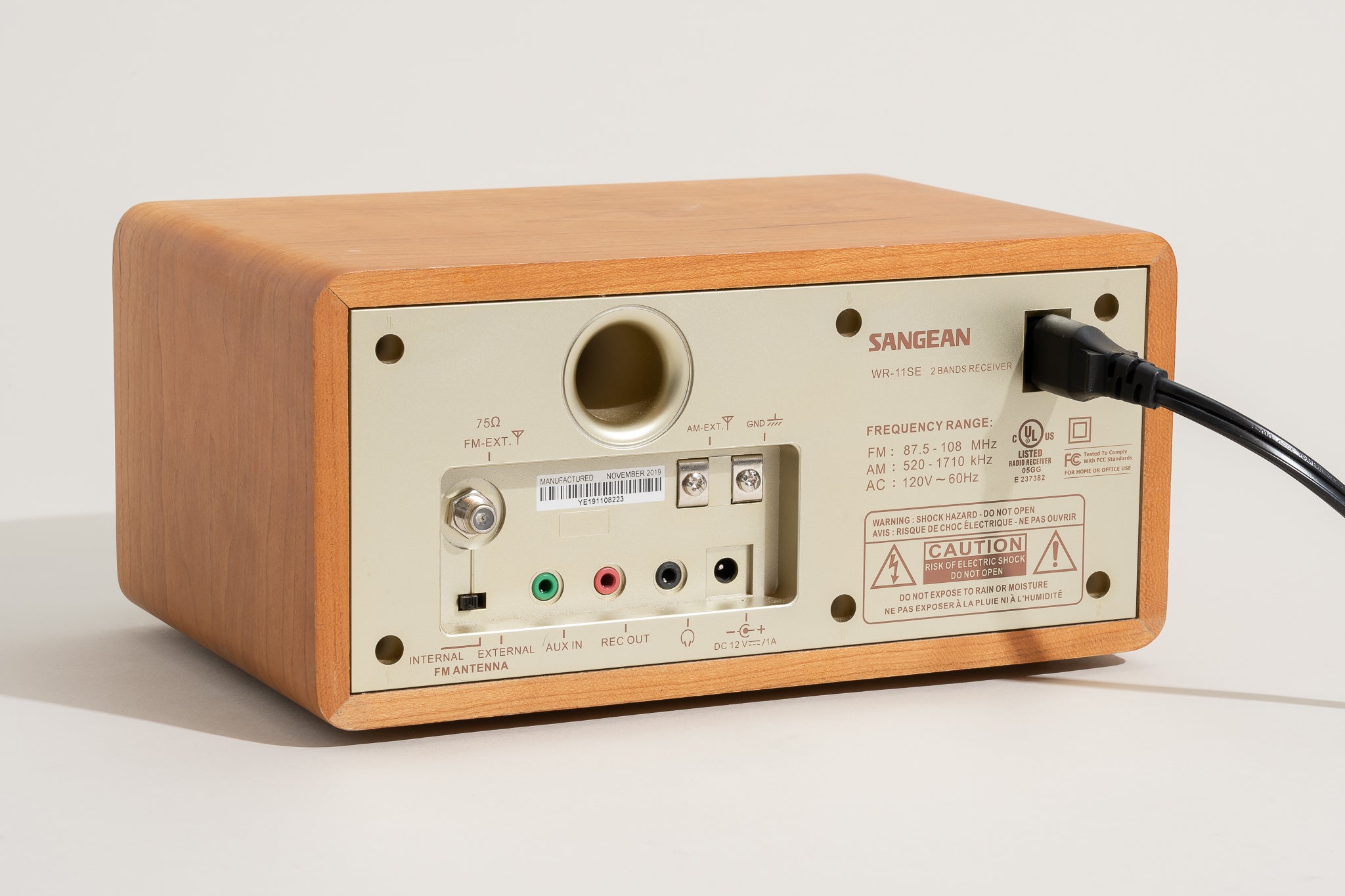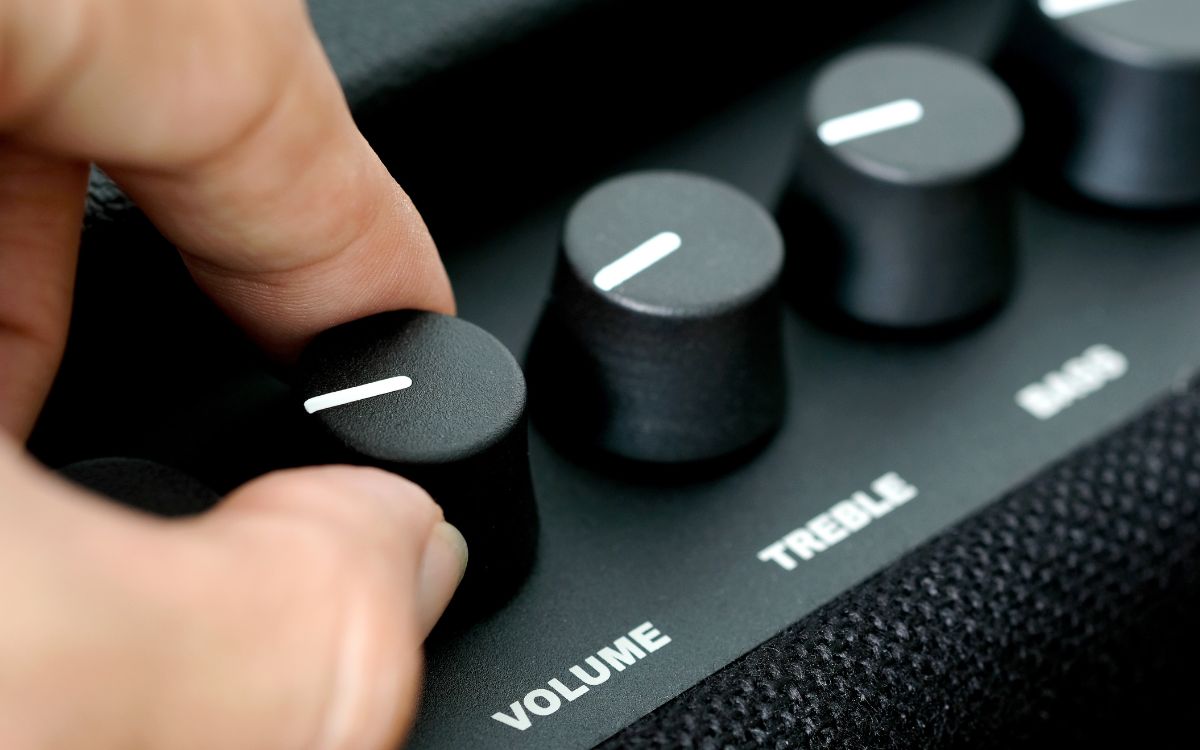Home>Devices & Equipment>Streaming>Why Is Streaming Music Quality Bad


Streaming
Why Is Streaming Music Quality Bad
Published: March 9, 2024
Discover why streaming music quality is often subpar and learn how to improve your listening experience. Explore the impact of streaming on audio quality and find solutions to enhance your enjoyment of music.
(Many of the links in this article redirect to a specific reviewed product. Your purchase of these products through affiliate links helps to generate commission for AudioLover.com, at no extra cost. Learn more)
Table of Contents
Introduction
Streaming music has become an integral part of our daily lives, offering a convenient and accessible way to enjoy our favorite tunes. Whether we're unwinding after a long day, working out at the gym, or simply seeking some musical inspiration, streaming platforms have revolutionized the way we consume music. However, despite the undeniable convenience, many music enthusiasts have voiced concerns about the quality of streamed music. The question arises: why is streaming music quality often perceived as subpar?
In this article, we will delve into the factors that contribute to the perceived lack of quality in streaming music. From the technical aspects of compression and bitrate to the limitations imposed by streaming platforms, we will explore the various elements that can impact the overall listening experience. Additionally, we will examine the role of internet connection and device quality in influencing the fidelity of streamed music. By shedding light on these factors, we aim to provide a comprehensive understanding of why streaming music quality may fall short of expectations.
As we embark on this exploration, it's important to recognize that the issue of streaming music quality is multifaceted. While streaming platforms have undoubtedly democratized access to a vast library of music, the trade-offs in audio quality have not gone unnoticed. By unraveling the complexities behind this phenomenon, we can gain a deeper appreciation for the intricacies of streaming technology and its impact on our auditory experiences. Let's embark on this journey to uncover the nuances of streaming music quality and gain insights into the factors that shape our sonic encounters.
Compression and Bitrate
When it comes to streaming music, the concepts of compression and bitrate play a pivotal role in shaping the quality of the audio that reaches our ears. Compression, in the context of audio streaming, refers to the process of reducing the file size of a song while attempting to retain its essential sonic characteristics. This reduction in file size is essential for efficient streaming, as it allows for smoother playback and faster buffering times. However, the downside of compression is that it can lead to a loss of audio data, resulting in a perceptible decline in sound quality.
Bitrate, on the other hand, is a measure of the amount of data transmitted per unit of time. In the realm of audio streaming, bitrate is often used to quantify the level of audio compression. A higher bitrate generally corresponds to better audio quality, as it signifies a greater amount of data being transmitted, thereby capturing more nuances and details within the music.
Streaming platforms typically employ various compression algorithms and bitrate settings to balance the need for efficient delivery with the desire to maintain acceptable audio fidelity. For instance, the widely used MP3 format utilizes perceptual coding to discard audio data that is deemed less essential for human perception. While this approach significantly reduces file sizes, it can result in a loss of audio information, particularly at lower bitrates.
Moreover, the advent of advanced audio codecs such as AAC and Ogg Vorbis has offered improved compression efficiency, enabling streaming platforms to deliver relatively higher quality audio at lower bitrates. These codecs leverage sophisticated algorithms to achieve better compression without sacrificing as much audio fidelity.
However, despite these advancements, the inherent trade-off between file size and audio quality remains a fundamental challenge in the realm of streaming music. As streaming platforms strive to cater to diverse audience preferences and bandwidth limitations, they must navigate the delicate balance between compression and bitrate to deliver a satisfactory listening experience to their users.
In essence, the interplay between compression and bitrate underscores the intricate dance between file size and audio fidelity in the realm of streaming music. While technological advancements continue to refine the efficiency of audio compression, the quest for uncompromising audio quality in the streaming domain remains an ongoing pursuit, shaped by the delicate equilibrium between data optimization and sonic richness.
Platform Limitations
In the realm of streaming music, platform limitations exert a significant influence on the perceived quality of the audio delivered to listeners. These limitations encompass a spectrum of factors, ranging from the technical constraints of streaming services to the intricacies of licensing agreements and content delivery protocols.
One prominent aspect of platform limitations pertains to the specific audio formats supported by streaming services. While the industry-standard MP3 format remains ubiquitous, its inherent limitations in preserving high-fidelity audio have prompted the adoption of alternative formats such as FLAC and WAV, which offer superior audio quality. However, the widespread compatibility of these formats across various devices and streaming platforms remains a challenge, leading to compromises in audio quality to ensure broad accessibility.
Furthermore, the intricacies of content delivery networks (CDNs) employed by streaming platforms can introduce additional constraints on audio quality. CDNs are responsible for efficiently distributing content to users across diverse geographical locations, often necessitating the use of adaptive bitrate streaming to accommodate varying network conditions. While this adaptive approach enhances the reliability of content delivery, it can result in fluctuations in audio quality as the bitrate dynamically adjusts to network bandwidth, impacting the overall listening experience.
Moreover, the intricacies of licensing agreements between streaming platforms and record labels can influence the quality of available music. These agreements may impose restrictions on the bitrate at which songs can be streamed, thereby constraining the audio fidelity experienced by users. Additionally, the availability of high-resolution audio, which offers superior sonic detail, may be limited due to licensing considerations, further contributing to the perceived limitations in streaming music quality.
The user interface and playback settings offered by streaming platforms also play a role in shaping the audio experience. While some platforms provide options for adjusting audio quality settings based on user preferences and network conditions, others may offer limited control over the streaming bitrate, constraining the ability of listeners to optimize audio quality according to their preferences.
In essence, platform limitations encompass a myriad of technical, licensing, and user interface factors that collectively influence the quality of streaming music. As streaming services continue to evolve, addressing these limitations while striving to deliver uncompromising audio quality remains a pivotal endeavor, reflecting the intricate interplay between technological capabilities, industry dynamics, and user expectations.
Internet Connection
The quality of a user's internet connection stands as a critical determinant of the streaming music experience. In the realm of audio streaming, the stability and bandwidth of the internet connection directly impact the fidelity and consistency of the audio playback.
A robust internet connection facilitates the seamless transmission of audio data, enabling the streaming platform to deliver higher bitrate audio with minimal buffering interruptions. Conversely, a subpar internet connection characterized by low bandwidth or frequent disruptions can lead to downgraded audio quality and frustrating playback interruptions.
The impact of internet connection quality on streaming music is particularly pronounced when considering the adaptive bitrate streaming employed by many platforms. In this approach, the streaming service dynamically adjusts the bitrate of the audio stream based on the user's network conditions, aiming to maintain uninterrupted playback. However, in scenarios where the internet connection fluctuates or experiences congestion, this adaptive bitrate mechanism may result in perceptible shifts in audio quality, detracting from the overall listening experience.
Furthermore, the prevalence of mobile streaming adds another layer of complexity to the interplay between internet connection quality and streaming music. Mobile networks, characterized by varying signal strengths and network congestion, can introduce additional challenges in delivering consistent and high-quality audio to users on the go. The transition between different network types, such as 3G, 4G, and Wi-Fi, further compounds the intricacies of maintaining optimal audio quality during mobile streaming.
It is important to note that while advancements in audio compression and streaming technologies have mitigated some of the challenges posed by fluctuating internet connections, the fundamental reliance on a stable and high-bandwidth internet connection remains a cornerstone of the streaming music experience. As users continue to embrace streaming as their primary mode of music consumption, the need for reliable and high-speed internet connectivity becomes increasingly pronounced in ensuring a gratifying and immersive audio experience.
In essence, the quality of the internet connection serves as a linchpin in the delivery of high-fidelity streaming music, underscoring the intricate relationship between network stability, bandwidth availability, and the seamless transmission of audio data. As streaming platforms and internet service providers strive to enhance the robustness of internet connections, the pursuit of uncompromising audio quality in the streaming domain remains intricately intertwined with the evolving landscape of digital connectivity.
Device Quality
The quality of the device used to access and play streamed music significantly influences the overall auditory experience. From smartphones and tablets to dedicated audio equipment, the capabilities and specifications of the playback device play a pivotal role in determining the fidelity and richness of the streamed audio.
One fundamental aspect of device quality pertains to the audio output capabilities. High-quality headphones, earphones, or speakers can substantially enhance the perception of streamed music, allowing for a more immersive and detailed listening experience. Devices equipped with advanced audio processing technologies, such as digital-to-analog converters (DACs) and high-fidelity amplifiers, can faithfully reproduce the nuances and intricacies of the streamed audio, elevating the sonic immersion for the listener.
Moreover, the display and user interface of the playback device also contribute to the overall user experience. Devices with vibrant and high-resolution displays can complement the audio experience by offering visually engaging interfaces and intuitive controls, enhancing the overall enjoyment of the streaming music platform.
The processing power and network connectivity of the device further influence the streaming music experience. Devices with robust processors and efficient network adapters can facilitate seamless audio streaming, minimizing buffering times and ensuring consistent playback without interruptions. Additionally, the availability of storage space on the device can impact the ability to download high-quality audio for offline listening, offering users the flexibility to enjoy pristine audio even in the absence of a stable internet connection.
Furthermore, the compatibility of the device with various audio formats and streaming protocols can shape the breadth of available content and the flexibility of audio settings. Devices that support a wide range of audio formats, including high-resolution formats such as FLAC and WAV, empower users to access and enjoy superior audio quality, provided that the streaming platform and network conditions allow for such high-fidelity playback.
In essence, the quality of the playback device serves as a critical determinant of the streaming music experience, encompassing aspects such as audio output capabilities, display quality, processing power, network connectivity, and format compatibility. As users seek to optimize their streaming music encounters, the choice of a high-quality playback device emerges as a pivotal factor in unlocking the full potential of streamed audio, enriching the sonic journey for music enthusiasts across the digital landscape.
Conclusion
In the realm of streaming music, the perceived quality of the audio that reaches our ears is shaped by a multifaceted interplay of technical, platform-related, connectivity, and device-centric factors. The intricate dance between audio compression and bitrate underscores the ongoing quest to balance file size efficiency with uncompromising audio fidelity. While advancements in audio codecs and streaming technologies have mitigated some of the challenges posed by compression, the fundamental trade-off between data optimization and sonic richness remains a central theme in the streaming music landscape.
Platform limitations, encompassing technical constraints, licensing dynamics, and user interface intricacies, exert a significant influence on the quality of streamed music. The quest to deliver high-fidelity audio while ensuring broad accessibility and seamless content delivery reflects the delicate equilibrium that streaming platforms must navigate in catering to diverse user preferences and industry dynamics.
The quality of the internet connection emerges as a linchpin in the streaming music experience, with network stability and bandwidth availability directly impacting the fidelity and consistency of audio playback. The reliance on a robust internet connection underscores the pivotal role of digital connectivity in shaping the sonic encounters of streaming music enthusiasts.
Moreover, the quality of the playback device stands as a critical determinant of the streaming music experience, encompassing audio output capabilities, display quality, processing power, network connectivity, and format compatibility. The choice of a high-quality playback device emerges as a pivotal factor in unlocking the full potential of streamed audio, enriching the sonic journey for music enthusiasts across the digital landscape.
As we navigate the complexities of streaming music quality, it becomes evident that the pursuit of uncompromising audio fidelity is a collective endeavor, intertwining technological innovation, industry dynamics, and user preferences. The ongoing evolution of streaming platforms, audio codecs, internet connectivity, and playback devices reflects a concerted effort to elevate the streaming music experience, offering music enthusiasts an immersive and gratifying auditory journey.
In essence, the nuances of streaming music quality encapsulate a rich tapestry of technological intricacies, industry dynamics, and user-centric considerations, underscoring the multifaceted nature of the sonic encounters that unfold within the realm of streaming music. As we continue to embrace the convenience and accessibility of streaming platforms, the pursuit of uncompromising audio quality remains a guiding beacon, shaping the evolution of the streaming music landscape and enriching the auditory experiences of music enthusiasts worldwide.











